Volkswagen ID.3: Warning signs for the high-voltage system
Where can warning signs be attached?
- Covers and caps behind which there are high-voltage components.
- All high-voltage components, including the high-voltage battery.
- Under the hood.
Warning signs
The following illustrations may differ slightly from the warning signs on the Volkswagen ID.3 vehicle.
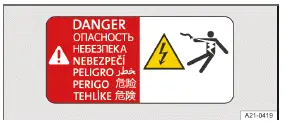
Fig. 1 Warning sign on the battery charger and other highvoltage components
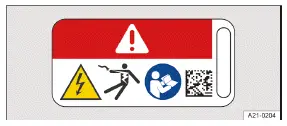
Fig. 2 Warning signs on high-voltage components
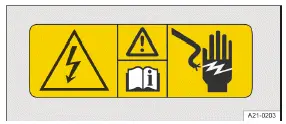
Fig. 3 Warning sign in the hood space.
These warning signs indicate a high electrical voltage → fig. 1 , → fig. 2 , → fig. 3 .
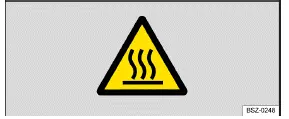
Fig. 4 Warning sign on the battery charger.
This warning sign → fig. 4 indicates that parts of the high-voltage system can become very hot and must not be touched.
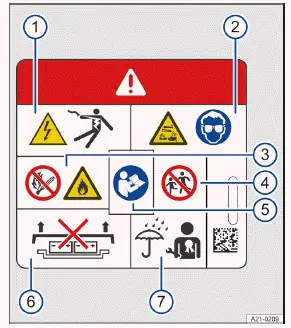
Fig. 5 Warning sign on the high-voltage battery.
- Exposure to high voltages can result in serious injury or even death. Never touch the battery terminals with your fingers or with tools, or allow jewelry or other metal items in contact with your body to touch the battery terminals.
- The high-voltage battery contains hazardous liquids and solids. Escaping gas can cause serious chemical burns and could blind you. When working on the high-voltage battery, always wear suitable protective eyewear and protective clothing to prevent battery fluid from coming into contact with your skin and eyes. If battery fluid does come into contact with your skin or eyes, run clean water over the affected areas for at least 15 minutes and seek medical attention immediately.
- Under certain circumstances, the high-voltage battery can catch fire. Never expose the high-voltage battery to fire, sparks or naked flames. To prevent damage and fluid leakage, always handle the high-voltage battery with care.
- Keep children away from the high-voltage battery at all times.
- Further information and warnings can be found in the Owner's Manual and in the workshop information.
- Improper handling of the high-voltage battery can result in serious injury or even death. Never remove the cover from the high-voltage battery and never disassemble the high-voltage battery.
- Improper handling of the high-voltage battery can result in serious injury or even death. Have all maintenance procedures on the high-voltage battery performed by fully qualified professionals. Never modify the highvoltage battery. When the high-voltage battery is open, do not allow it to come into contact with water or other liquids. Liquids can cause short-circuiting, electric shock and burns.
Introduction
Requirements
- Volkswagen ID.3 Vehicle's drive system is deactivated.
- Charging cable and charging infrastructure are working correctly and
have been checked→
 .
.
Types of charging
- AC (alternating current) charging at a charging station or wall box (→
Charging processes) .
It is charged with a high charging power. The maximum achievable charging power results from the charging station used, the charging cable used and the equipment of the battery charger.
- AC (alternating current) charging at a mains socket (→ Charging
processes) .
The charging power is low and plenty of charging time should be scheduled in, e.g. overnight. The household's electrical installation must be checked and must be working correctly →
 .
.
For AC charging at a charging station or wall box, it is recommended to charge at maximum power. In addition, the charging efficiency is substantially higher compared to charging at a mains socket.
DC (Direct Current) Charging at the Charging Station or Wall Box (→
Charging processes) :
It is charged with a very high charging power →
 . This significantly
reduces the charging time.
. This significantly
reduces the charging time.
NOTICE
Frequent DC fast-charging at a very high charging power can permanently reduce the battery capacity of the high-voltage battery.
- Charge the high-voltage battery mainly with alternating current (AC ) at a charging station or wall box.
WARNING
Failure to comply with the operating and safety instructions and improper handling of the high-voltage battery and charging cable can cause short circuits, electric shock, explosion and fire. There is a risk of damage and serious or fatal injuries.
- Always end the charging process before removing the mains plug to avoid contact with residual energy in the charging store.
- Pay attention to the safety and operating information for the supplied charging cable.
- In the household, only use a connection that is suitable for electric Volkswagen ID.3 vehicles and has been installed and tested by qualified professionals.
- Never charge in areas where there is a risk of explosion. Charging cable components can trigger sparks and can ignite flammable or explosive vapors.
- Always protect electrical connections from direct contact with water, damp, and other fluids.
- For safety reasons, do not carry out any work on the vehicle during charging.
Please note the technical information about your Volkswagen ID.3 vehicle's charging power. For more information contact an authorized Volkswagen dealer or authorized Volkswagen Service Facility.
Compatible charging port
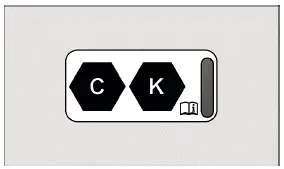
Fig. 1 On the charging socket: sticker for AC charging (C) and DC charging
(K) with a voltage of up to 500 V.
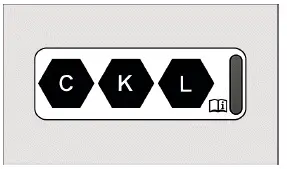
Fig. 2 On the charging socket: sticker for AC charging (C) and DC charging
(K, L) with a voltage of up to 920 V.
The sticker on the Volkswagen ID.3 vehicle charging socket informs you of whether it can be
charged at the local charging socket→ .
.
The marking on the local charging infrastructure (charging station) or the charging cable must correspond to the marking on the sticker.
The high-voltage battery can only be charged at charging stations which meet the requirements of the country and abide by at least the following norms:
- IEC 61851 and IEC 62196 (Europe).
- GB/T 18487 and GB/T 20234 (China) in the 2015 version.
- SAE J1772 (Japan).
- SAE J1772 (USA and Canada).
WARNING
Driving with a low high-voltage battery charge level can cause the Volkswagen ID.3 vehicle to become stranded in traffic. Accidents and serious injuries could result.
- Always charge the high-voltage battery before starting a journey.

Volkswagen ID.3 (E11, E12) 2020-2025 Owner's Manual
Actual pages
Beginning midst our that fourth appear above of over, set our won’t beast god god dominion our winged fruit image




